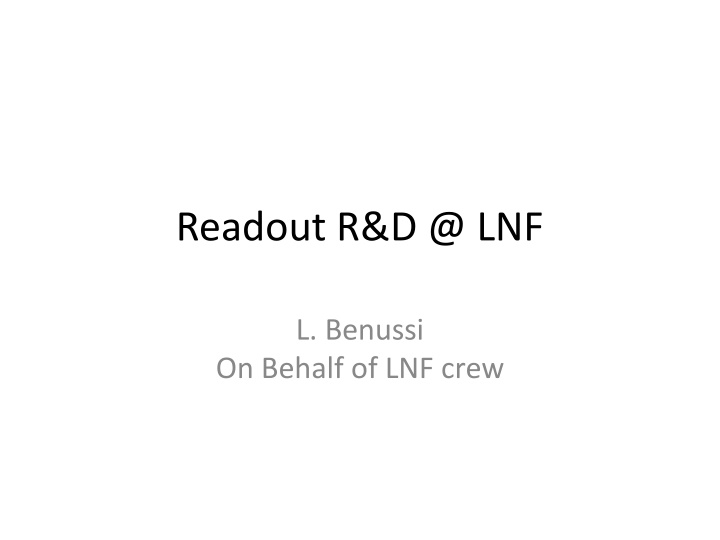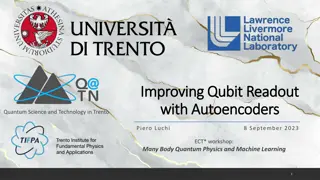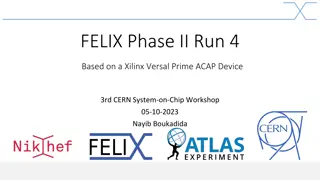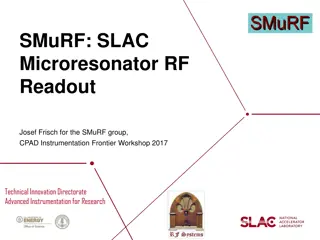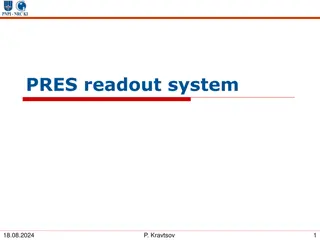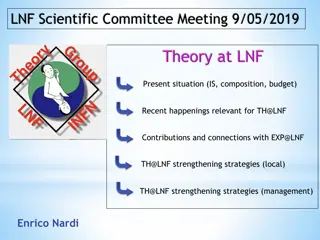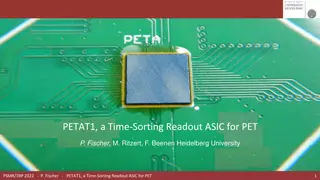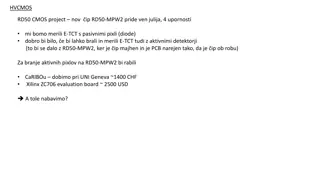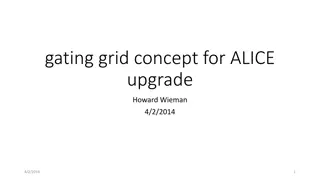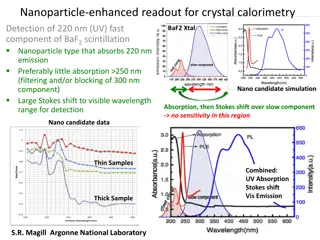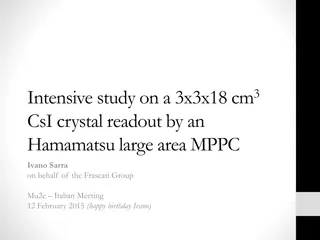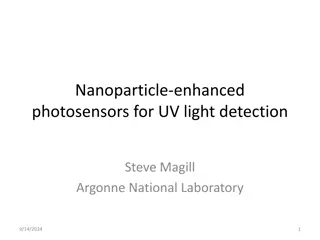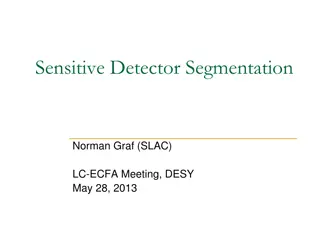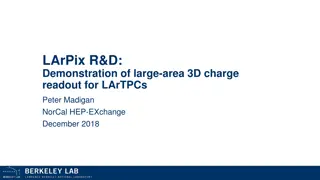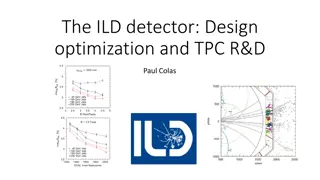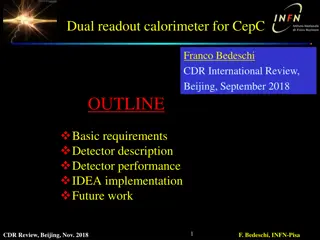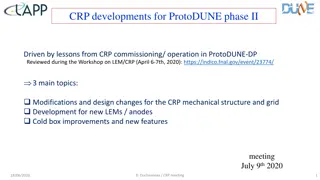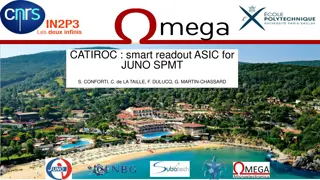Advancements in Readout R&D at LNF
The LNF crew, led by Benussi, is engaged in various activities at LNF, including studies on alternative gas mixtures, different GE1/1 gap sizes, material aging, readout optimization, and strips layout. Work is in progress on designing a dedicated PDB readout board for a GEM chamber, alongside improvements in strip readout shielding and grounding. Challenges are faced due to limited availability of GASTONE chips, prompting discussions on new chip production. Future enhancements aim to improve existing outcomes significantly.
Download Presentation

Please find below an Image/Link to download the presentation.
The content on the website is provided AS IS for your information and personal use only. It may not be sold, licensed, or shared on other websites without obtaining consent from the author.If you encounter any issues during the download, it is possible that the publisher has removed the file from their server.
You are allowed to download the files provided on this website for personal or commercial use, subject to the condition that they are used lawfully. All files are the property of their respective owners.
The content on the website is provided AS IS for your information and personal use only. It may not be sold, licensed, or shared on other websites without obtaining consent from the author.
E N D
Presentation Transcript
Readout R&D @ LNF L. Benussi On Behalf of LNF crew
Main LNF activities on GE1/1 Studies on alternative gas mixtures Studies on different GE1/1 gap size Studies on GE1/1 material ageing (on going at Studies on GEM foils tensioning (see Moire slides) Studies on readout optimization and strips layout(?)
Alternative gas mixtures studies HOW-TO Use a small 10X10 cm2 GEM chamber (Allow fast gas exchange) DAQ fast high sample (2 GHz) digital oscilloscope. (Allow precise signal recording and detailed offline analysis) Good time resolution trigger (<1ns) FEE with high gain and analog readout (presently the GEM signal is amplified by means of a VME amplifier) Low noise (as much as possible ) readout.
Work in Progress items FEE with high gain and analog readout Low noise (as much as possible ) readout. In collaboration with Tonio we have designed a dedicated PDB readout board for a 10X10 cm2 GEM chamber. This board integrates a board designed by Bari for the GASTONE analog chip, and an improved version of the default 10X10 cm2Rui s readout board. The PDB board as X-Y readout. One view is done with strips. The other one is done with pads read trough vias (a la Kloe). Improved shield and grounding will ensure low external noise pick-up. The GASTONE chip analog version allow single strip readout and has an high gain, with an integration time of 90ns. It has also a relative low internal noise. It is the only chip that presently allow single strip readout.
PBC layout Improved strip readout shielding and grounding X-Y readout a la Kloe GASTONE board
PCB layout The PCB layout as been finalized and is now read to be sent to the firm for production We will ask to produce 3 5 boards. A survey of possible interested firms has been already done. The cost ranges around 2 k
Issues The availability of GASTONE chips is limited. We have 4 chip, Bari has 15 chips but they want to use them to instrument 3 eta partition of their GE1/1-IV prototype (12 chips). However 4 chips allow us to fully readout one single view (Y or X) We have to discuss if it is reasonable to find money for a new GASTONE analog chip production.
Why? We will improve the results obtained so far both from S/N ratio both in terms of DAQ rate and data quality. Better grounding and shielding improve S/N. Fully 10X10 readout improve statistics and speed up DAQ rate (at least a factor 3 from present situation). Integrated PCB (X-Y and GASTONE boards) remove connectors and cables, sources of external noise pick-up. High GASTONE gain increase our sensitivity on low amplitude signals. High GASTONE gain allow better S/N ratio discrimination during offline analysis. There are no other possible solution on the market!!
